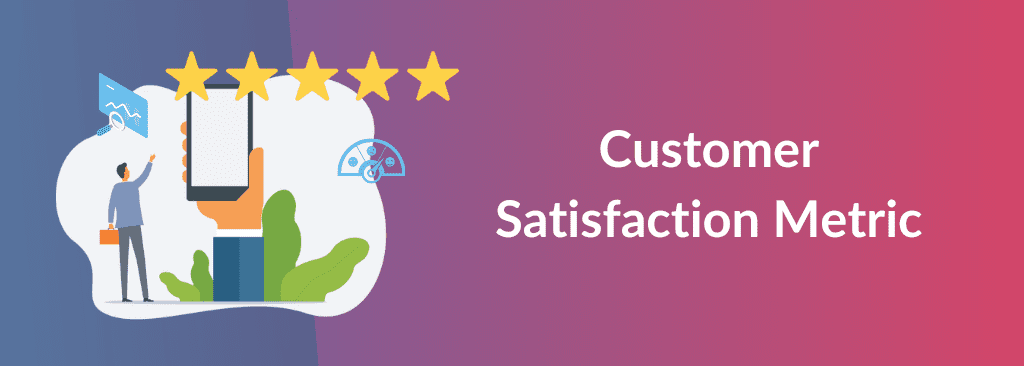Is Customer Satisfaction the Right Metric to Measure?
I called a currency exchange company a few months ago to convert INR to Euros for travel.
The guy on the phone gave the exchange rate. He asked me if I was comfortable with the rate provided. Once I said yes, he asked me for copies of my travel documents and asked me to transfer the Indian Rupee equivalent of the Euros to his company account.
After this, I got a call stating that one of his agents would visit my place and hand over the Euros. This chap came home and handed the cash to me, and on his way out, he asked me to leave a Google Review.
I said I’d do that, and he checked if I could do it right away as it would only take a couple of minutes. So, I went to provide a review on Google, and the natural inclination was to give him a five-star rating.
The other day, I took an Ola cab to go shopping. Once the driver dropped me, he asked me to leave a five-star rating for him. I smiled at him and left a five-star rating for him on the app.
Yesterday, my wife took delivery of her scooter from a nearby showroom. After handing over the keys and explaining the control, the salesperson wished her on the purchase. Then, he asked her to leave a Google Review.
The natural thing she did was to give him a five-star rating.
Have you ever given anyone a three or four-star rating?
It is either five or one, and nothing in-between.
Do these data mean anything about customers’ inclination to stay loyal to you?
Look at this.
An article in Forbes mentioned that 75% of the customers who leave a company to go with a competitor assess their experience of the company they abandoned as ‘satisfied’ or ‘completely satisfied.’
Satisfaction means adequate or sufficient, and you are not talking about exceptional here. This does not mean that your customers will be loyal to you.
Let me explain this with a few examples.
Example 1
Imagine you going to a local coffee shop. You enjoy the coffee and pastries, and the staff is always friendly.
After each visit, you receive a customer satisfaction survey, and you consistently rate the experience as ‘satisfied’ or ‘very satisfied.’
However, one day, a new coffee shop opens nearby, offering a wide variety of beverages and a loyalty program where customers earn points for every purchase.
You decide to try the new coffee shop, and you start to visit the new shop more often.
While you were generally satisfied with the previous coffee shop, the enhanced offerings and the rewards program at the new one created a strong sense of loyalty, leading you to switch preferences.
Example 2
I started watching OTT platforms like Zee5, SonyLIV, and Sun Network.
I was happy with the choice of movies, the ability to navigate the apps, and the overall experience. I consistently rated my experience with these platforms as ‘satisfied’ whenever I took the surveys.
However, once I got exposed to Netflix, I was blown away by the features. It offered more personalized recommendations based on my watching history and provided better options. The quality of streaming and the video quality were better.
Even though I was satisfied with the other platforms, once I got onto Netflix, I slowly moved away from those platforms.
The personalized offerings, the choices, and the quality of the videos created a strong sense of loyalty for me.
Example 3
You have been with the same cell phone service provider for years. You have generally been satisfied with the service; whenever there’s an issue, customer support promptly resolves it.
You consistently rated the provider’s service as ‘satisfied’ or ‘very satisfied.’
However, a competing provider approaches you with a special promotion that includes more data, unlimited calls, and a new smartphone at a discounted price. While you are happy with your existing provider, the appealing promotion and added value attract you to the competitor.
You switch your preferences.
Check out this article on: How to boost your brands social currency?
In each of these examples, while the customers were generally satisfied, they eventually switched to the competitors.
This demonstrates that while customer satisfaction is important, it’s not the sole determinant of customer loyalty.
Factors such as unique value propositions, personalized experiences, rewards programs, competitive advantages, and emotional connections can all build stronger customer loyalty and affinity, even if initial satisfaction levels are high.
Organizations should consider adopting a more holistic approach to measuring customer affinity and loyalty. This should involve combining customer satisfaction with metrics like NPS, customer retention rates, customer lifetime value, and qualitative feedback.
By doing so, organizations gain a more comprehensive understanding of customer relationships and make more informed decisions to foster genuine loyalty and affinity.
